
The Inca Empire, also known as the Incan Empire and the Inka Empire, was the largest empire in pre-Columbian America. Its political and administrative structure is considered by most scholars to have been the most developed in the Americas before Columbus' arrival. The administrative, political and military center of the empire was located in the city of Cusco. The Inca civilization arose from the Peruvian highlands sometime in the early 13th century. Its last stronghold was conquered by the Spanish in 1572.
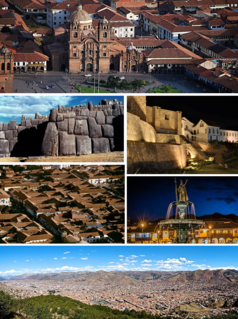
Cusco, often spelled Cuzco, is a city in southeastern Peru, near the Urubamba Valley of the Andes mountain range. It is the capital of the Cusco Region and of the Cusco Province. In 2017, the city had a population of 428,450. Located on the eastern end of the Knot of Cuzco, its elevation is around 3,400 m (11,200 ft).

Machu Picchu is a 15th century Inca citadel, located in the Eastern Cordillera of southern Peru, on a 2,430-metre (7,970 ft) mountain ridge. It is located in the Cusco Region, Urubamba Province, Machupicchu District, above the Sacred Valley, which is 80 kilometres (50 mi) northwest of Cuzco and through which the Urubamba River flows, cutting through the Cordillera and creating a canyon with a tropical mountain climate.
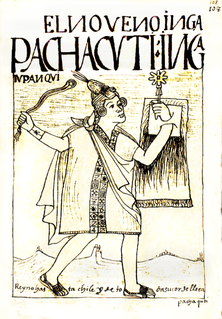
Pachacuti Inca Yupanqui was the ninth Sapa Inca (1418–1471/1472) of the Kingdom of Cusco which he transformed into the Inca Empire (Tawantinsuyu). Most archaeologists now believe that the famous Inca site of Machu Picchu was built as an estate for Pachacuti.

Atahualpa, also Atabalica, Atahuallpa, Atabalipa or Atawallpa (Quechua) was the last Inca Emperor. After defeating his brother, Atahualpa became very briefly the last Sapa Inca of the Inca Empire (Tawantinsuyu) before the Spanish conquest ended his reign.
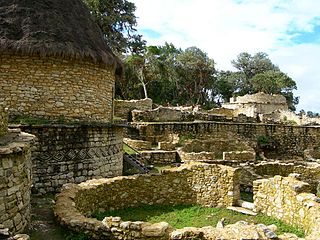
The Chachapoyas, also called the "Warriors of the Clouds", was a culture of the Andes living in the cloud forests of the Amazonas Region of present-day Peru. The Inca Empire conquered their civilization shortly before the Spanish conquest in the 16th century. At the time of the arrival of the conquistadors, the Chachapoyas were one of the many nations ruled by the Incas, although their incorporation had been difficult due to their constant resistance to Inca troops.
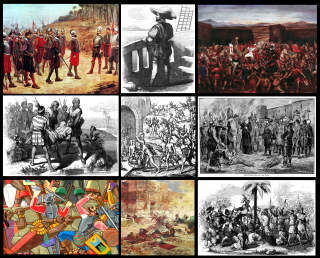
The Spanish conquest of Peru was one of the most important campaigns in the Spanish colonization of the Americas. After years of preliminary exploration and military skirmishes, 168 Spanish soldiers under conquistador Francisco Pizarro, his brothers, and their native allies captured the Sapa Inca Atahualpa in the 1532 Battle of Cajamarca. It was the first step in a long campaign that took decades of fighting but ended in Spanish victory in 1572 and colonization of the region as the Viceroyalty of Peru. The conquest of the Inca Empire, led to spin-off campaigns into present-day Chile and Colombia, as well as expeditions towards the Amazon Basin.
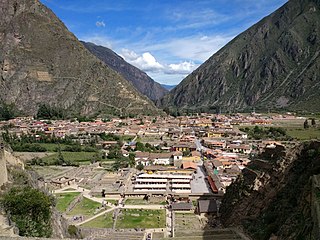
Ollantaytambo is a town and an Inca archaeological site in southern Peru some 72 km (45 mi) by road northwest of the city of Cusco. It is located at an altitude of 2,792 m (9,160 ft) above sea level in the district of Ollantaytambo, province of Urubamba, Cusco region. During the Inca Empire, Ollantaytambo was the royal estate of Emperor Pachacuti, who conquered the region, and built the town and a ceremonial center. At the time of the Spanish conquest of Peru, it served as a stronghold for Manco Inca Yupanqui, leader of the Inca resistance. Nowadays, located in what is called the Sacred Valley of the Incas, it is an important tourist attraction on account of its Inca ruins and its location en route to one of the most common starting points for the four-day, three-night hike known as the Inca Trail.

Incan architecture is the most significant pre-Columbian architecture in South America. The Incas inherited an architectural legacy from Tiwanaku, founded in the 2nd century B.C.E. in present-day Bolivia. A core characteristic of the architectural style was to use the topography and existing materials of the land as part of the design. The capital of the Inca empire, Cuzco, still contains many fine examples of Inca architecture, although many walls of Inca masonry have been incorporated into Spanish Colonial structures. The famous royal estate of Machu Picchu is a surviving example of Inca architecture. Other significant sites include Sacsayhuamán and Ollantaytambo. The Incas also developed an extensive road system spanning most of the western length of the continent and placed their distinctive architecture along the way, thereby visually asserting their imperial rule along the frontier.

The Incas were most notable for establishing the Inca Empire in pre-Columbian America, which was centered in what is now Peru from 1438 to 1533, and represented the height of the Inca civilization. The Inca state was known as the Kingdom of Cuzco before 1438. Over the course of the Inca Empire, the Inca used conquest and peaceful assimilation to incorporate the territory of modern-day Peru, followed by a large portion of western South America, into their empire, centered on the Andean mountain range. However, shortly after the Inca Civil War, the last Sapa Inca (emperor) of the Inca Empire was captured and killed on the orders of the conquistador Francisco Pizarro, marking the beginning of Spanish rule. The remnants of the empire retreated to the remote jungles of Vilcabamba and established the small Neo-Inca State, which was conquered by the Spanish in 1572.
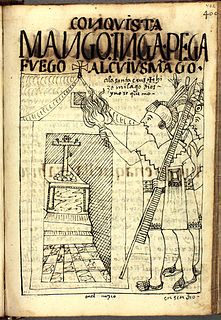
The Siege of Cusco was the siege of the city of Cusco by the army of Sapa Inca Manco Inca Yupanqui against a garrison of Spanish conquistadors and Indian auxiliaries led by Hernando Pizarro in the hope to restore the Inca Empire (1438–1533). The siege lasted ten months and was ultimately unsuccessful.

Stellaria graminea is a species of flowering plant in the Caryophyllaceae family known by the common names common starwort, grass-leaved stitchwort, lesser stitchwort and grass-like starwort.
Large odorous frog, Odorrana graminea, is a species of frog in the family Ranidae. It is found in southern China (from southern Anhui and northern Zhejiang west to extreme southern Gansu, southeastern Sichuan, and southern Yunnan to the border of Vietnam, Laos and Myanmar, although it has not yet been recorded in the latter two countries. Its type locality is the Wuzhi Mountain in Hainan. Until the revision of "Rana livida" in 2003, this frog was considered a synonym of Odorrana livida. The species occurs near fast-flowing rivers and streams in montane tropical forests.

Inca mythology includes many stories and legends that attempt to explain or symbolize Inca beliefs.
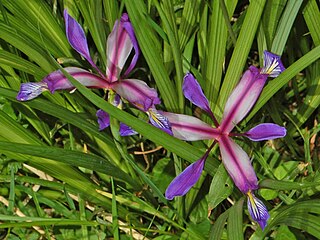
Iris graminea, is a species in the genus Iris belonging to the subgenus Limniris, in particular the series Spuriae. It is a rhizomatous perennial, with purple or violet blue flowers almost hidden by narrow, grass-like leaves, and a plum scented fragrance. It is cultivated as an ornamental plant in temperate regions. It has several common names, including grass-leaved flag, grass leaved iris, plum iris and plum tart iris. This species naturally occurs in the southern half of Europe, from Spain and France in the West to Russia and the Caucasus in the East.
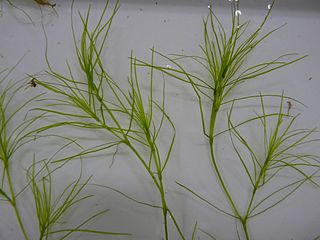
Najas graminea, also known as ricefield water-nymph is a species of aquatic plant found in freshwater habitats, especially still or slow-moving waters, like ponds and rice fields. It grows to a maximum length of 30 cm. The flowers are monoecious. The flowering season is from July to September.

Sagittaria graminea, the grassy arrowhead or grass-leaved arrowhead, is an aquatic plant species native to eastern North America. It is known from every Canadian province from Ontario to Newfoundland, and every US state from the Great Plains to the Atlantic, plus Colorado, New Mexico and Cuba. It is considered naturalized in Washington State and in Vietnam.
Graminea is a genus of longhorn beetles of the subfamily Lamiinae.

The Neo-Inca State, also known as the Neo-Inca state of Vilcabamba, was the Inca state established by Inca emperor Huayna Capac's son Manco Inca Yupanqui in Vilcabamba, Peru in 1537. It is considered the remnants of the Inca Empire (1438–1533) after the Spanish conquest. It lasted until 1572, when the last Inca stronghold was conquered, and the last ruler, Túpac Amaru, Manco's son, was captured and executed. This ended the resistance to the Spanish conquest under the political authority of the Inca state.

Persoonia graminea is a shrub native to the south-west of Western Australia, where it is found on poorly-drained or loamy soils.
















